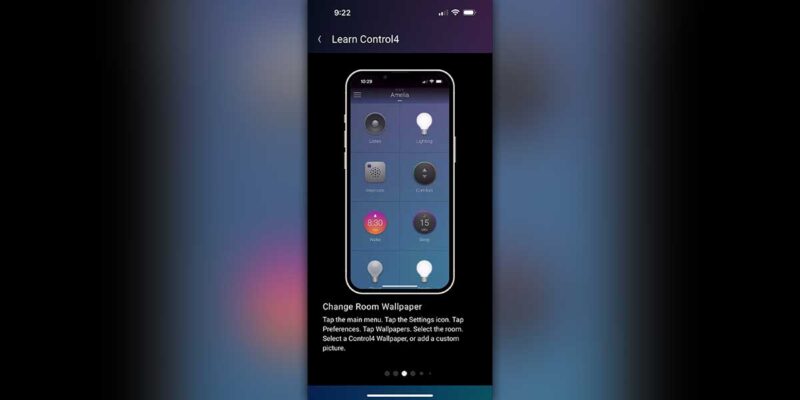Selling Soft Serv(ices) — Hurdle Three: Liabilities
Back in the spring, I launched a series of blogs on The Hard Truth about Selling Soft Service(ices) focusing on why AV has had a hard time turning the corner to managed services, software, video over IP and AV as a Service (AVaaS). I wrote about the first two hurdles in separate posts dealing with business models and sales compensation plans and even wrote a sidebar on how AVaaS is more than a glorified lease. Well, it has been a few months obviously, but I was asked the other day by a colleague if I had ever written about the third hurdle, what I identified as liabilities. And so, here is that missing post!

ID 42881787 © Lucian Alexandru Motoc | Dreamstime.com
AV integrators deal with a lot of potential liabilities in their day to day operations. They have to deal with potential auto accidents in their work trucks, workman’s compensation claims that may affect their EMRs and increase their costs, the possibility of a structural failure in their installations causing equipment to fall on a customer and so on. I am not by any means saying that AV has no liabilities as an industry or that integrators by nature are more risk-averse than any other business.
However, the softer side of AV creates some liabilities that may cause certain integrators to pause or hesitate, which means in order to embrace this new frontier, integrators will have to do some due diligence to mitigate their risks.
AV Over IP
As it pertains to AV over IP, I once heard the president of an integrator tell their team that as a company they were watching video over IP, however, they were not selling it yet because they didn’t sell the network switch. They were not ready for the potential liabilities that may arise from utilizing third-party hardware provided by IT, nor the potential liability and business implications that could arise from improperly managing the AV network traffic in a way that assured quality performance while not affecting the traditional IT devices.
The easiest way to mitigate liabilities like this is to hire or train staff properly in networking best practices. This means going outside the traditional AV talent pool or taking smart, hungry people and sending them to get CCNAs or similar network certifications. It seems like this is happening, which is encouraging.
According to AVIXA’s latest AV channel employment report,
“IT roles within AV firms are on the rise
Job posting data among the top integration firms shows an increasing number of positions which fall under the computer user support specialist occupation. This joins the more traditional audio and video equipment technician as the top occupations within integrators.”
Services
There are three major liabilities that need to be navigated for an AV firm to be successful providing managed services or AVaaS offerings.
The first one goes hand in hand with the AV over IP network liabilities above. In order to offer remote management or cloud-based services, you need a link to the customer’s network.
Yes, I know that many jobs have required this in the past, but in those cases, we were typically placing one management device behind the firewall and creating a VPN right to that device. In today’s installs, especially with network-centric AV devices, the security ramifications can be much higher. Certain verticals like healthcare, finance and government typically have their own regulations and best practices based on the sensitivity of the data on their networks as well.
The only good remedy to these problems is to have someone who is formally educated on the network and its security as part of your team. This allows your team and the customer’s IT department to have an intelligent conversation about what type of access devices have to the network, how they need to be separated or secured and then creating a network topology that addresses those issues together, one that they can sign off on prior to installation of AV on the network, mitigating the integrator’s liability, given they follow the plan as agreed to.
In some cases, especially with AVaaS, software may become necessary and needs to be installed on the companies machines in order to facilitate the flexibility and on-demand access to AV services like virtualized DSP, web-based content, remote service and support, etc. In these cases, many integrators are gun shy about installing software on their client’s PCs. If that piece of hardware ends up having an issue, the AV software may be the first thing the end user puts the blame on. “You touched it, you broke it.”
As it pertains to these software and hardware liabilities, I think Gabe Moronta from Zoom addressed them well from a contract perspective in the comments of my original post, so I’ll quote him here:
A very well worded contract indemnifying contractor or integrator of liability should be able to resolve this. If the service being sold requires access to corporate hardware, networks, etc. the customer must make their network, ITSec team, or whomever available to service provider to ensure there are no “oops, there goes the east coast data center” moments.
Access to the IT team is not just recommended, it should be contractually required. If for some reason the integrator still does not feel comfortable working or installing hardware on the customer’s IT network, an agreement could also be made for the customer’s IT team to install the software on devices that meet a minimum specification.
In any case, these situations should really be viewed less as liabilities and more as opportunities to develop deeper relationships with the customer’s IT team. Imagine the advantages long term for your firm if you are the ones who helped develop the network topology and understand all of the intricacies of the customer’s network and the all the ramifications of improper installation and configuration.
The last liability that may cause some hesitation for AV firms in making the switch to managed services and AVaaS is Service Level Agreements.
Service Level Agreements define response and repair times so that businesses may properly plan for potential business interruptions and their resolution. Some SLAs even include penalties or credits for downtime outside of the defined response. For integrators new to services, how do you staff accordingly to assure you can meet all of the SLAs for all of your service customers?
Obviously, creating remote access and installing IP based systems mentioned above can create huge efficiencies over rolling a truck.
There are also options to build in on-site staff to the managed service or AVaaS offerings, assuring that someone can physically be in the room. A friend of mine worked as on-site staff for a major pharmaceutical company, where their SLA for meeting room issues was to have someone in the room within 15 minutes. Having on-site staff was the only way to meet that requirement.
In cases where there is no on-site staff and the issue requires more than a virtual visit, truck rolls are necessary. There is always some risk involved if you are new to providing this service, however, the best way to mitigate that is to keep track of what each trip costs you. Not just in time and materials, but in administrative costs of dispatching technicians, procurement costs of finding replacement hardware, and impromptu costs incurred by trips to Home Depot, etc.
Accurate service call costing allows the integrator to identify types of products or installations that typically require more upkeep and allow them to adjust costs for services on those jobs appropriately moving forward. A little work on the process side will go a long way toward long-term profitability of service based business. Some integrators have started doing this very well, geo-tagging trucks, tracking travel times, adjusting for traffic, lunches, hardware store visits, etc. This allows them to accurately staff their service divisions based on their current SLAs and other contractual obligations as well as to accurately adjust their pricing to avoid losing margins.
So there you have it. Hurdle Three to Selling Soft Serve(ices).
I’d love to hear your thoughts in the comments below.





